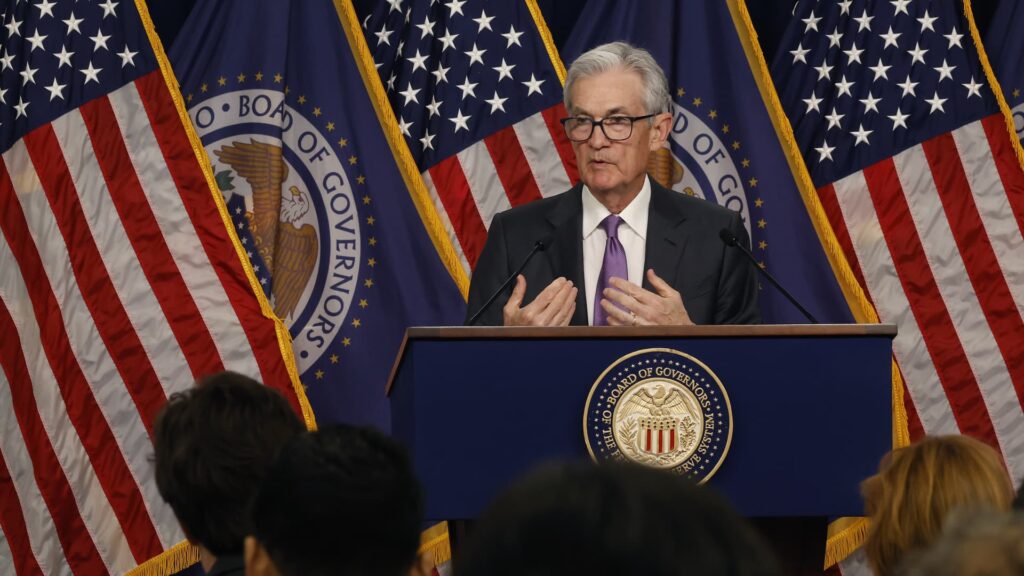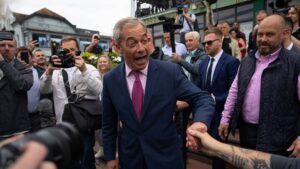
Federal Reserve Chairman Jerome Powell and his fellow policymakers may not have said much at their meeting this week, but the market heard all it needed. In fact, the two-day Federal Open Market Committee policy session concluded with virtually no change to the post-meeting statement and the same projection for three interest rate cuts this year that officials put forth at their December gathering . But affirmation of the status quo was more than enough. The meeting set the stage for a powerful two-day rally that has sent the major averages to new records now that investors know the Fed is still on an easing course that has been generally unaltered by some hot inflation readings in early 2024. “The message from [Wednesday’s] FOMC meeting is straightforwardly and strongly dovish,” wrote Citigroup economist Andrew Hollenhorst. Similarly, JPMorgan chief economist Michael Feroli, while noting that cuts for future years were modestly less aggressive in Wednesday’s “dot plot,” said, “Chair Powell had the final word today and his overall message was dovish.” Commentary from major Wall Street economists carried similar themes: First, the Fed is likely to start cutting in June absent any major data surprises. Second, the bias over the next several years will be to keep cutting. Third, the end of this “quantitative tightening” cycle is imminent as the committee soon will taper and then completely end the efforts to shrink the central bank’s $7.6 trillion balance sheet. There was some worry on the Street that the recent inflation data might spook enough members to shift the trajectory of cuts to something a little more cautious. However, Powell showed an inclination to look through the data and focus on a bigger picture that shows inflation is likely to ease through the year. “Powell painted a dovish picture by noting that, even though the firmed January and February inflation prints did little to reinforce this confidence, monetary policy remains restrictive and inflation is set to slow in coming months, thereby opening the door to cuts ‘at some point this year,'” wrote Jonathan Millar, senior U.S. economist at Barclays. “We maintain our rate call, as we think the FOMC is itching to cut rates this year, when the data present an appropriate opportunity,” he added. Guessing on cuts If there were any significant divergences in analysis, it came from economists who think the Fed will cut more than it is indicating, not less. On the most aggressive end, Morgan Stanley expects four 25 basis point cuts this year followed by the equivalent of eight in 2025. Wells Fargo also is in the four-cut camp for 2024, while Citi expects five. On the more cautious side, Deutsche Bank estimates four, but chief U.S. economist Matthew Luzzetti remarked that “risks remain skewed to more hawkish outcomes” that would mean fewer cuts. Goldman Sachs is aligned with FOMC members’ views for three cuts, though it sees reductions in subsequent years to be less than the current projections as Fed officials reckon with a neutral rate of interest — neither stimulative nor restrictive — that’s about a full percentage point higher than the 2.6% indicated in the dot-plot update. “We saw three takeaways from Powell’s press conference,” wrote Goldman economist David Mericle. “First, Powell was not concerned by the firmer January and February inflation data. Second, Powell noted that, while the FOMC raised its 2024 GDP growth forecast meaningfully, stronger growth has been made possible recently by faster growth of labor supply and is therefore not an argument against rate cuts. Third, FOMC participants think it will be appropriate to slow the pace of balance sheet runoff ‘fairly soon.'” Goldman and others are betting the balance sheet runoff starts as soon as May, when the Fed could halve the $60 billion cap in maturing proceeds from its Treasury holdings that it is allowing to roll off each month. Multiple Street forecasters expect the Fed to allow somewhere around $1 trillion to fall off through the early part of 2025. — CNBC’s Michael Bloom contributed reporting .






